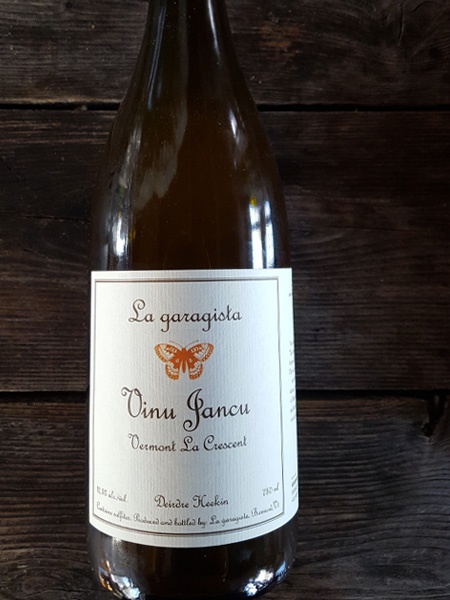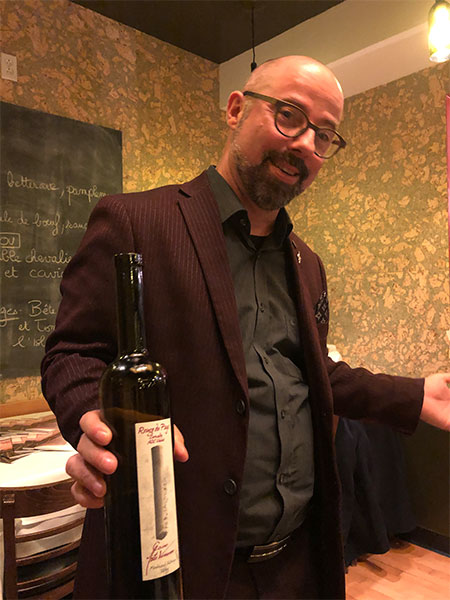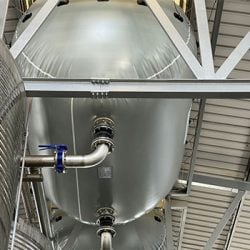At a dinner after her Tasting Climate Change conference in Montréal, Quebec, guests had followed Michelle Bouffard’s request to bring a local wine from home. There was everything from Côte-Rôtie to Napa Valley cabernet on the table. And a bottle of Vinu Jancu, grown near Lake Champlain, from Deirdre Heekin at La Garagista in Vermont. Made from la crescent, a vitis vinifera cross, it was one of the most compelling wines on the table—and the bottle we finished first.


When I poured a taste for José Vouillamoz, the Swiss grape geneticist and co-author of Wine Grapes, with Julia Harding, MW, and Jancis Robinson, MW, he apologized to me for having opened his only bottle of diolle on the previous night. Vouillamoz had spoken at the conference about the importance of local varieties and a diverse genetic pool for sustaining vineyards through a changing climate. It’s an effort he’s taken on personally, recovering this near-extinct variety near his home in the Valais.
His presentation came after Miguel Torres described a similar project the Torres family had undertaken in the Catalan hills, seeking out varieties that had yet to be identified in local vineyards, or had long been forgotten. Torres described a warming period in Europe (roughly 900 to 1300 AD), when temperatures went up and farmers were selecting vines that matured later. “That was followed by a little Ice Age,” he said. “These late-maturing vines were abandoned. Now these grapes are very interesting.” Torres and his team have propagated the most promising varieties they’ve recovered so far, a project Patricio Tapia documented in W&S, August 2019.
Like Torres, Vouillamoz sought out unidentified vines through an ad in his local paper. With his database of 2,500 varieties, he uses DNA profiling to determine the identities of vines that growers can’t name. The diolle he poured was propagated from two vines he found growing out of a stone wall. He looked up references to diolle in ampelography texts, first recorded in 1654 and last mentioned in 1903. Working with Swiss vigneron Didier Joris, he propagated enough material from those two vines to plant a 3,200-square-foot vineyard near his home in 2013, and has been struggling to get a reasonable yield ever since. The wine he opened pre-conference was one of 134 bottles he made with Joris in 2018, their largest production so far. Rather than a commercial venture, he considers it, at least in part, an experiment to understand the challenges of working with local biodiversity—to practice what he is preaching to the world at large.


“Historic grape varieties are part of the solution.
They have plasticity.”
—Jose Vouillamoz
“Historic grape varieties are part of the solution,” he said during the conference. “They have plasticity. In Switzerland, global warming, so far, has been positive for late-ripening varieties. We have more regular harvests, but it will not be the case in the future.”


“The most important focus is on the biodiversity that already exists,” Vouillamoz said, describing the 1,000 clones of pinot noir, for instance—some very productive, some with very small bunches—that we know of, and how CRISPR technology (a tool for modifying gene function) may be used in the coming years to edit genes and produce pinot noir that’s more resistant to the challenges brought on by a changing climate.
Pointing to the diversity of genetic material still present in Iberia’s vineyards, he says, “I think people were lacking imagination when they were planting cabernet sauvignon everywhere. In Spain and Portugal, we have a huge diversity that could be used in Australia and in eastern countries. We will plant many more varieties than we have seen before.”
Joshua Greene is the editor and publisher of Wine & Spirits magazine.
This story appears in the print issue of February 2019.
Like what you read? Subscribe today.

















